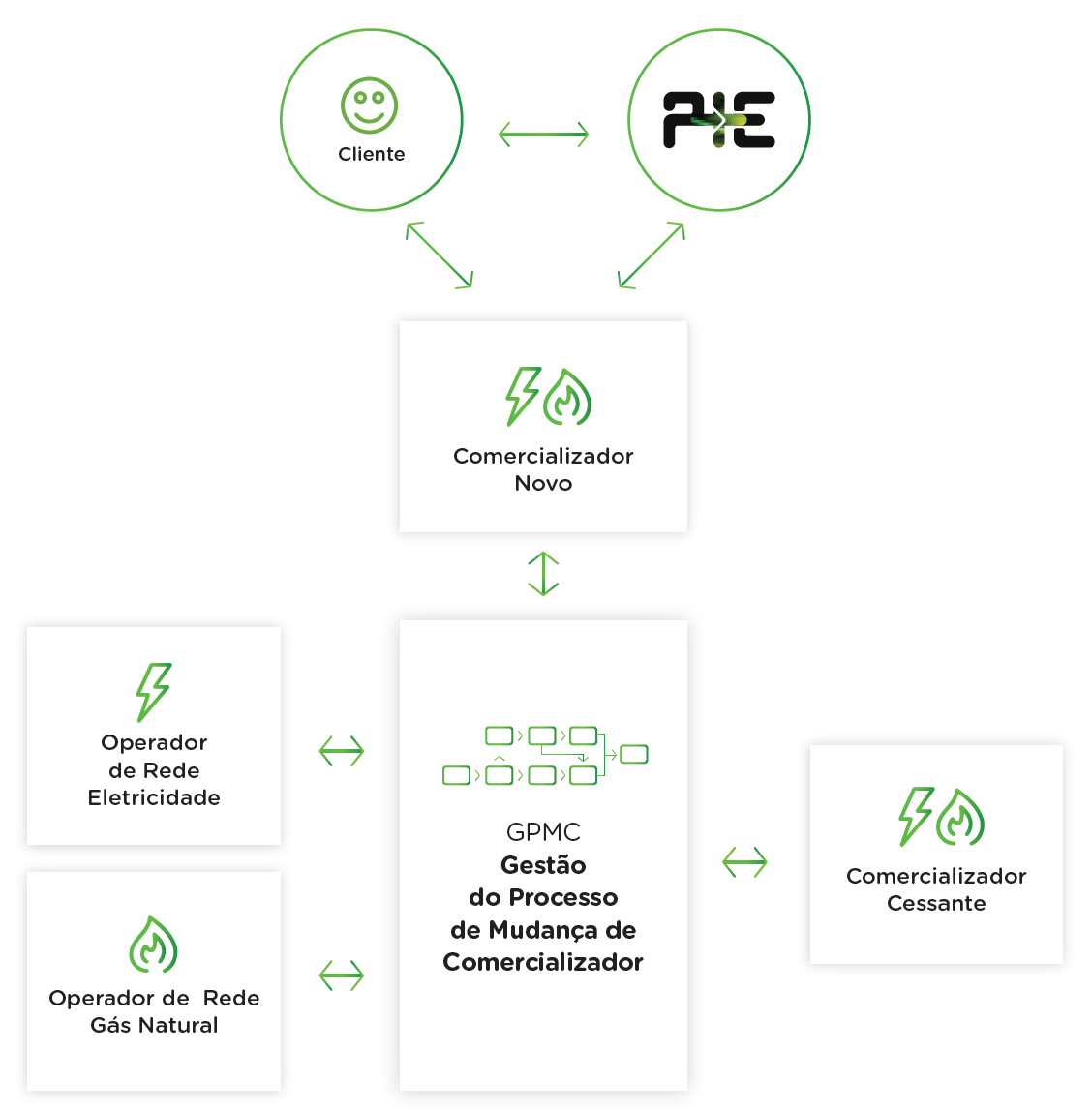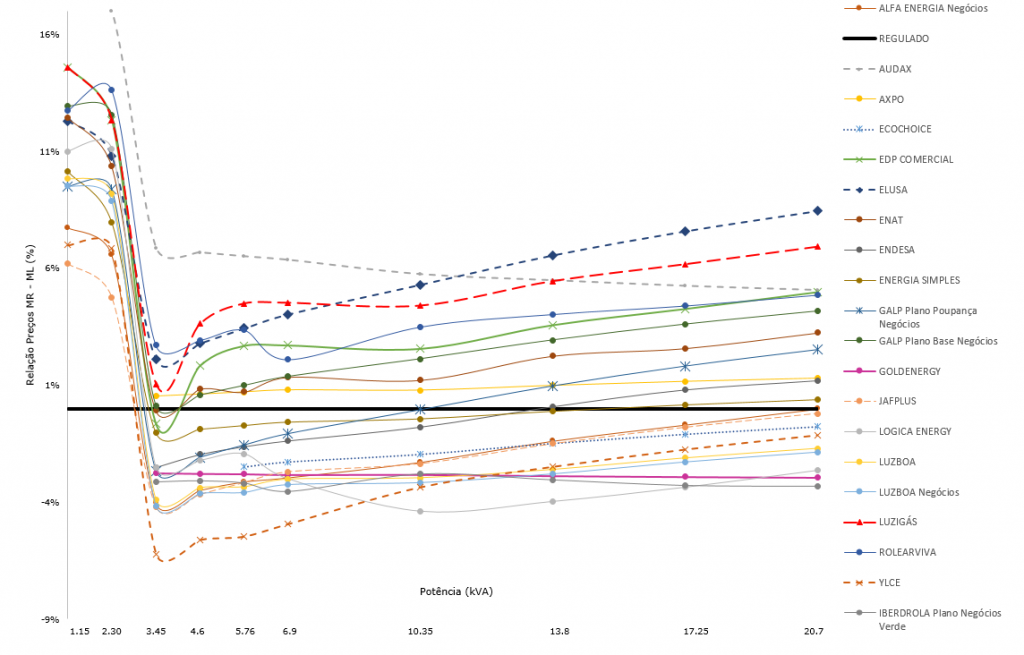Business Simulator
With the liberalization of the electricity sector in 2006 and natural gas in 2010, all energy consumers can choose their energy supplier. Along with this change, the need arises to clarify the consumer regarding these new characteristics of the sector, namely the difference between a regulated and a liberalized market and how the establishment of final energy sales prices works. This is how the Poupa Energia (PE) Portal was launched, launched on November 14, 2017.
ABOUT THE MARKET
The Poupa Energia portal is the result of a decree-law (38/2017 of 31 March) and is an integral part of a Simplex 2017 measure (measure # 201) called Portugal Energia. This DL defined the activities of the Logistics Operator for the Change of Supplier (OLMC) and established ADENE – Portuguese Energy Agency as the entity responsible for exercising the activity of OLMC.
The main objective of the portal is to inform the consumer, inform him of (i) how the process of changing the electricity and natural gas trader works, (ii) which suppliers exist in the market, (iii) tariffs available and updated market and (iv) there is also a service line available every business day from 9 am to 6 pm. Also for consumer support, the EP also allows sending an e-mail and also has a chat tool (webchat) available.
It is also possible to register on the portal and have access to a reserved area that stores all consumer data and sends relevant notifications such as the update of a new tariff.
The portal has a structure entirely dedicated to supporting consumers in choosing the tariff that best suits their needs, having three (3) types of simulators, two (2) simulators for consumers in the domestic segment and one (1) specific simulator for small and medium-sized enterprises.
In the case of consumers in the domestic segment, they do not need their energy bill and can use the simple simulator that has a set of options by default. Consumers wishing to make a more detailed analysis can use the consumptions found on their invoices and make a detailed description of the household appliances, entering the data in the advanced simulator to accurately assess their annual bill and confirm which tariff is appropriate for your condition.
In addition to the simulators, the portal has a set of useful information, including energy efficiency tips to support consumers in reducing their energy consumption and a set of more frequent questions and answers that simply answer the main questions.
There is a specific area to explain how the supplier changes on the portal, identifying the six (6) steps necessary to effect a tariff change:
1. Running a simulation;
2. Analysis of the list of proposed tariffs that allow greater savings;
3. Subscription to a tariff and contact with the supplier;
4. The new supplier handles the entire process;
5. Execution of adjustments with the sending of an invoice from the previous supplier in order to terminate the contract;
6. Conclusion of the process, with the conclusion of the contract with the new supplier.
HOW THE CHANGE OF TRADER PROCESSES

The formalization of a new contract, when the holder remains, takes an average of 5 to 7 working days after the new supplier makes the change request for the new customer on the supplier change management platform.
When the process is complete, the customer should receive the closing invoice from the old supplier with the last reading and will receive the invoice from the new supplier in his billing period. The reading information is given to the new and outgoing supplier by the Distribution Network Operator (ORD).
With the development of the new vendor change management platform entrusted to OLMC, it is intended that the processes become simpler and consequently the change process becomes increasingly faster.
The portal currently offers 212 tariffs in the domestic segment and allows a comparison between them.
ABOUT THE SME SIMULATOR
In view of the data above, it is important to support small and medium-sized companies to reduce their bill.
The simulator for Small and Medium Enterprises (SMEs) is aimed at smaller companies, with normal low voltage consumption, since through Poupa Energia it is only possible to have access to tabulated tariffs, in which there is no detailed analysis by part of the supplier. Larger companies, with higher consumption and several facilities, should contact the supplier directly, as this way they can obtain more advantageous conditions, however, we always invite companies to carry out a simulation. For the analysis carried out by the simulator to be as realistic as possible, it is important that at least two invoices are submitted, if possible, referring to different periods and covering summer and winter.
HOW TO DO A SIMULATION FOR A COMPANY
Using the simulator is very simple:
1. Select the type of energy to simulate;
2. Indicate the location;
3. Choose the Economic Activity Code;
4. Indicate the period of operation;
5. Indicate the payment method and type of invoice;
6. Indicate contracted power and type of electricity tariff and step of natural gas;
7. Indicate the supplier;
8. Indicate the energy consumption;
9. Results.
The simulation results show the current tariff, based on the indicated consumption, and the most advantageous proposals that allow to reduce the energy bill. It is possible to immediately subscribe to a new tariff by filling in a simple set of information, which in the case of users registered on the Poupa Energia portal is already practically filled.
As already mentioned for the simulator of the domestic segment, the adhesion process is relatively fast, 5 working days on average, however, the period may be extended, according to some peculiarities of each process.
CHECKED SAVINGS
It is possible to reduce the bill from 10% to 20%, considering a tariff change according to current consumption. For example, a simple tariff that changes to a bi or tri-hourly tariff, thus allowing a substantial reduction in the bill in periods of empty or super-empty.
The adequacy of the contracted power is something that is also sometimes overlooked, it is important to properly assess the equipment in operation and adjust the power to any peaks. This parameter will influence the fixed term, paid daily, so reducing the contracted power substantially reduces the energy bill.
In the case of natural gas, the reduction in the energy bill focuses solely on the price difference between the tariffs practiced by the various suppliers.
EXAMPLE OF APPLICATION FOR A SME
Doing a SME electricity simulation for a company with the following profile:
For this case, the current value of the invoice is on average € 394 / month.
When making an SME simulation for the above profile, the portal presents a list of more economical solutions that allow to reduce the invoice. In this case, the most advantageous tariff corresponds to a value of 375 € / month, and allows an annual saving of 227 € in relation to its current tariff.
The values vary according to the market offers at a given time.
Likewise, we can make an analogy to the regulated market, in which the invoice value of this profile would be € 406 / month, that is, € 362 / year more expensive than the cheapest offer, which allows greater savings.
COMPARISON OF REGULATED MARKET PRICES VS LIBERALIZED ELECTRICITY MARKET
In the following analysis, it is possible to verify the difference between 21 of the various tariffs existing in the liberalized market compared to the regulated market for powers below or equal to 20.7 kVA (commercial offers in June 2018).
Relationship between tariffs in the regulated market and the free electricity market

With this graph it is possible to verify that all offers below the horizontal axis (in black), which correspond to the relationship with the regulated market, are more economical.
It is intended to illustrate that there are several more advantageous proposals in the liberalized market and that consumers should periodically evaluate the tariffs available in the market.
When registering on the Poupa Energia portal, users receive notifications, if they so wish, with information on new tariffs, information on loading tariffs, among other relevant information.



 Simulador Simples
Simulador Simples Simulador Avançado
Simulador Avançado